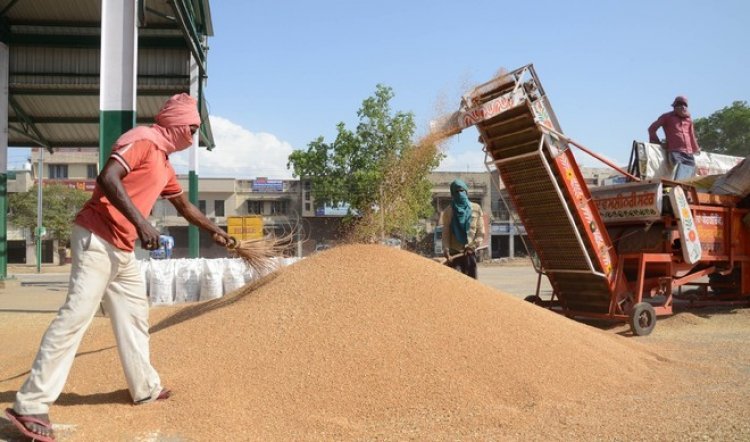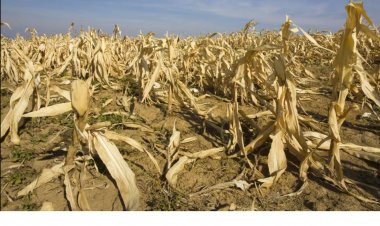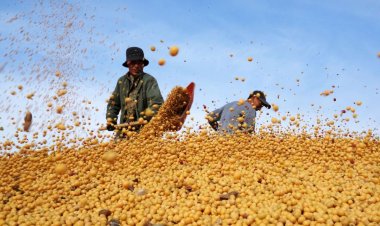In the next decade, that is till the year 2032, India will contribute the most in the increase in the production of wheat and rice in the world. This estimate has been made in the Agricultural Outlook 2023-32 of OECD and FAO.
According to this, the production of wheat in the world is likely to increase by 76 million tonnes to 855 million tonnes by 2032. India is the third largest producer of wheat in the world and the increase in production will be maximum here. In the next decade, one-fourth of the increase in wheat production in the world will be from India. The main reason for this will be the use of better varieties and increase in area.
Russia, Canada, Argentina and Pakistan are also expected to see significant increases in production. By 2032, the European Union is expected to become the largest producer of wheat. It will leave China behind in this matter.
Rice production is expected to increase by 55 million tonnes in the next decade and the total production will reach 577 million tonnes by 2032. India will account for the largest share of this growth. China is the world's largest rice producer. The pace at which production has increased there during the last decade is likely to be sustained in the next decade as well. World maize production is expected to increase by 165 million tonnes to 1.36 billion tonnes by 2032.
The largest increases will be in the US, Brazil, Argentina and India. The production of coarse cereals is expected to increase by 23 million tonnes to 330 million tonnes. African countries will account for 75% of this growth.
The report states that by 2032, world grain production is expected to increase by 320 million tonnes to 3.1 billion tonnes. Rice and maize will account for most of this increase. As in the last decade, most of the increase in production will be in Asian countries. 45% of the total growth will be from this sector. Much of the growth in Africa will be in the case of maize and other coarse cereals. This sector will contribute more to world grain production growth than in the previous decade. Latin America and the Caribbean countries will contribute mainly in terms of maize.
Grain demand to grow at slow pace
The outlook states that during the next 10 years, world grain demand will grow at a slower rate than in the previous decade. This will happen because of the low rate of growth of demand for feed, biofuel and grain in industries. According to the Agricultural Outlook 2023-32 of the OECD and FAO, per capita food consumption in many countries has reached its highest level in the case of most cereals. So the increase in aggregate demand will not be much.
Much of the increase in the demand for food is directly related to the increase in population. The population is growing in low and middle income countries. Due to population, the consumption of wheat and rice in Asia and millet and maize in Africa will increase. Per capita consumption of rice in Africa is also expected to increase.
The increase in world grain production over the next decade will be driven by higher productivity and intensive agriculture on existing cultivated land. New and improved varieties of seeds will be available, inputs will be used more effectively and farming practices will also improve. However, in some countries, the effects of climate change, lack of access to new technology and low investment in the agricultural sector will affect production growth. Apart from this, increasing awareness about the environment and new environmental policies also affect growth.
Grain trade to grow by 11% by 2032
In the year 2022, 17% of the world's grain production was traded. However, this ratio is different for different cereals. 10% of rice and 25% of wheat production was traded. This ratio is likely to remain the same in the next decade. Asia is expected to remain the largest rice exporting region. Countries in Latin America and the Caribbean will mainly import wheat and export maize. Many African and Asian countries will increase their dependence on grain imports in the next decade.
It is estimated that by 2032, world grain trade will increase by 11% to 530 million tonnes. The contribution of wheat to this increase will be maximum at 43%, followed by maize at 34% and rice at 20%. The share of coarse cereals is likely to be 3%.
Russia will remain the largest wheat exporter. In 2032, it will account for 23% of the world's total wheat exports. Similarly, the US will continue to be the largest maize exporter, followed by Brazil. The European Union will mainly be an exporter of coarse cereals.
India, Thailand and Vietnam will continue to be major exporters of rice. As in previous years, demand for fodder in China will play a major role in the grain market. It is estimated that the import of maize and wheat into China will be slightly lower. In 2032, the import of maize is expected to be 19 million tonnes and that of wheat at 7.5 million tonnes. Cereal prices will continue to increase in the 2023-24 season, but in the coming period, with increased productivity and geopolitical stability, prices will come down and the trend will continue till 2032.
Wheat output to increase, rice to drop this year
The market conditions for wheat and coarse cereals in 2022-23 season are better than in the previous season. Global production has reached unprecedented levels and world stocks are rising. On the other hand, the production of maize and other coarse grains is not enough to meet the demand. Therefore, at the end of the 2023 season, the world stock of coarse cereals is expected to decrease.
Due to the Black Sea Grain Initiative, 15 million tonnes of grain were supplied by April 2023 and this reduced the uncertainty in the grain market to some extent. (But, Russia has since announced it would end the deal in July 2023.)
As far as rice is concerned, after bumper production for several consecutive years, its production in the world is expected to decrease in the 2022-23 season due to weather effects and increase in production cost. Due to decrease in production and change in policies, the use of rice in the world will also decrease and its trading will decrease in 2023. Although some countries are trying to increase their rice stocks, so the global stock will be at the second highest level at the end of the season.
40% of grain to be used for food
Most of the grains will be consumed as food and then as fodder. In 2032, 40% of total grain production will go directly to human consumption, 37% production will be used as animal feed, the remaining 23% will be used for biofuel and other purposes. However, this ratio varies from crop to crop. Wheat and rice are mainly used as food. Maize and other coarse cereals are used as fodder. The current use of cereals in the world is around 2.8 billion tonnes, which is expected to reach 3.1 billion tonnes by 2032.
The use of food grains for people's food will increase by 148 million tonnes, while the use of fodder is expected to increase by 130 million tonnes. Much of the growth in demand will come from Asian countries. The increase in the demand of grain as fodder will be highest in maize at 1.3% per annum, wheat at 0.9% and coarse cereals at 0.6% per annum. The rate of increase in the use of cereals in food is likely to be lower than in the previous decade.
However, the demand for wheat is expected to increase by 11% by 2025. Of this, 40% growth will come from India, Pakistan, Egypt and China. Consumption of wheat in people's food will increase by 57 million tonnes but it is expected to remain stable at 66% of the total consumption.
The increase in consumption of wheat as food will be three times that of fodder. This growth will primarily come from Asia, where demand for processed foods such as noodles is expected to increase. Maize consumption is expected to grow at a rate of 1.2% per year during the next decade, compared to 2.3% in the previous decade. The rate of increase in demand for coarse cereals will be higher. Their demand is expected to grow at a rate of 0.8% annually until 2032, compared to 0.2% per year in the previous decade.
The growth rate of demand for rice will remain high. Its consumption is expected to increase by 1.1% every year. 66% of the increase in demand will come from Asian countries. The main reason for this will not be increase in per capita consumption but increase in population.




 Join the RuralVoice whatsapp group
Join the RuralVoice whatsapp group









































